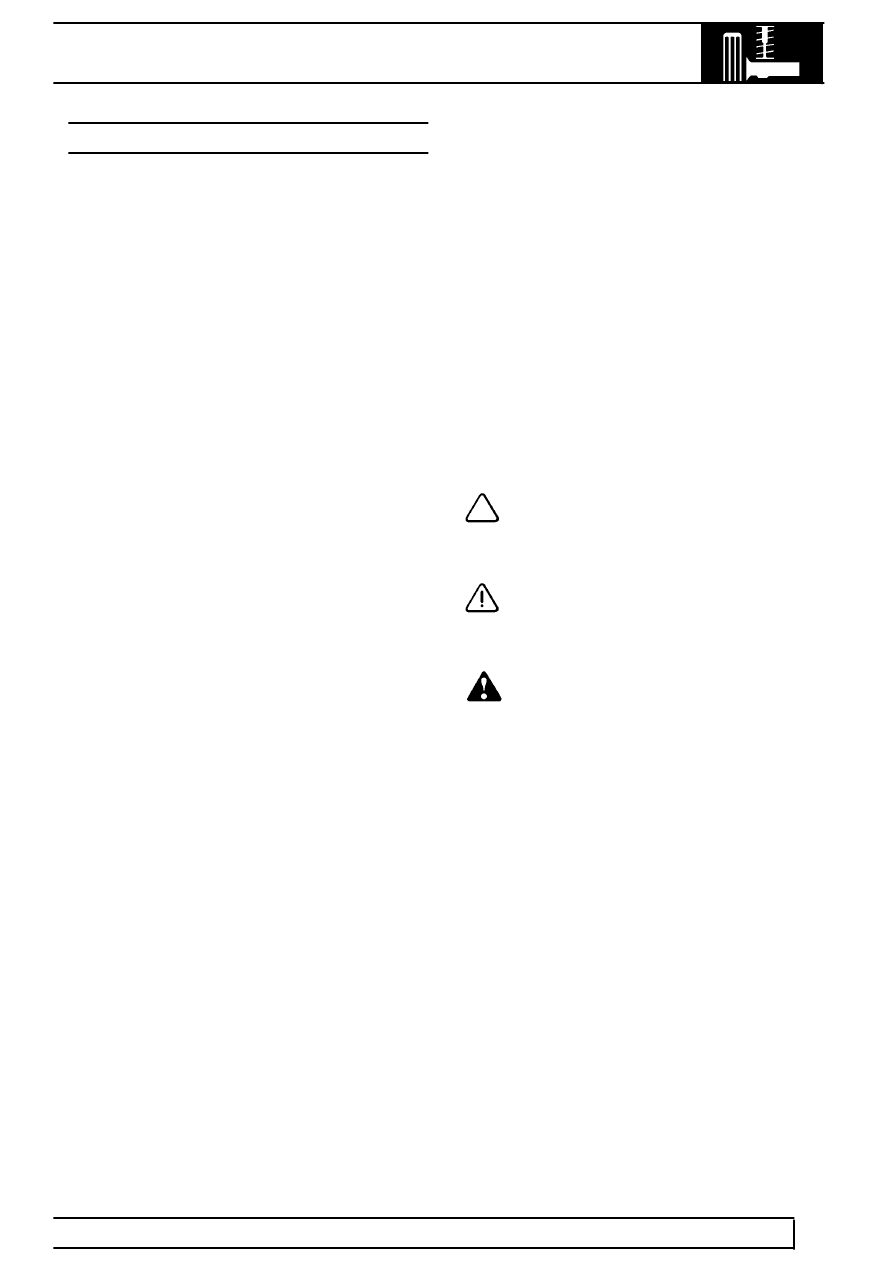Range Rover P38

ELECTRONIC AIR SUSPENSION
1
DESCRIPTION AND OPERATION
ELECTRONIC AIR SUSPENSION - EAS
Description
The Range Rover concept of air suspension is already
well established, the system fitted to the New Range
Rover is broadly similar. Progressive development
has resulted in added features to improve the control
and operation of the system.
Air springs provide a soft and comfortable feel to the
ride of the vehicle. The use of a microprocessor to
control the system exploits the advantages of air
suspension.
The system provides a near constant ride frequency
under all load conditions resulting in:
•
Improved ride quality
•
Consistency of ride quality
•
Constant ride height
•
Improved headlamp levelling
The system provides five ride height settings plus self
levelling. Each setting is automatically maintained at
the correct height by the system logic with the
minimum of driver involvement. Vehicle height is
sensed by four rotary potentiometer type height
sensors. Height information from each sensor signals
the electronic control unit (ECU) to adjust each air
spring by switching the solenoid valves to hold, add or
release air.
The five height settings are as follows:
Standard: Profile
Low profile: 25 mm (1 in.) below standard.
Access: 65 mm (2.6 in.) below standard. Crawl: It is
possible to drive at the access ride height at speeds
less than 32 km/h (20 mph), where headroom is
restricted.
High profile: 40 mm (1.6 in.) above standard.
Extended profile: 70 mm (2.75 in.) above standard.
This setting is not manually selectable.
Self levelling
On a coil sprung vehicle the effect of adding weight is
for the vehicle to lean either from front to back or side
to side unless the increased weight is evenly spread.
With air suspension, the system detects this body lean
and automatically compensates for it. The vehicle will
self level to the lowest corner height for 20 seconds
each time the driver exits vehicle and closes the
doors.
The system will check vehicle height every 6 hours
and make minor corrections, not exceeding 8 mm,
(0.31 in) as necessary.
When unloading through the tailgate the system will
self level to compensate for the decreased load after
door closure.
NOTE: If the vehicle is parked on uneven
ground or with a wheel or wheels on the
kerb, self levelling will lower the vehicle to
the lowest spring height.
CAUTION: The underside of the vehicle
must be kept clear of any obstacles while
the vehicle is parked, as self levelling may
result in a reduced trim height.
WARNING: Before commencing work
which requires access to the underside or
wheel arches of the vehicle, the
suspension must be allowed to relevel.
Relevelling is achieved by opening and closing of
any of the side doors, while all other doors and
tail gate remain closed, and the ignition off.
EAS must be set in ’high-lock’ using TestBook,
during any work which does not require chassis
to axle displacement. This will hold the
suspension in extended profile position, until
reset by TestBook.
